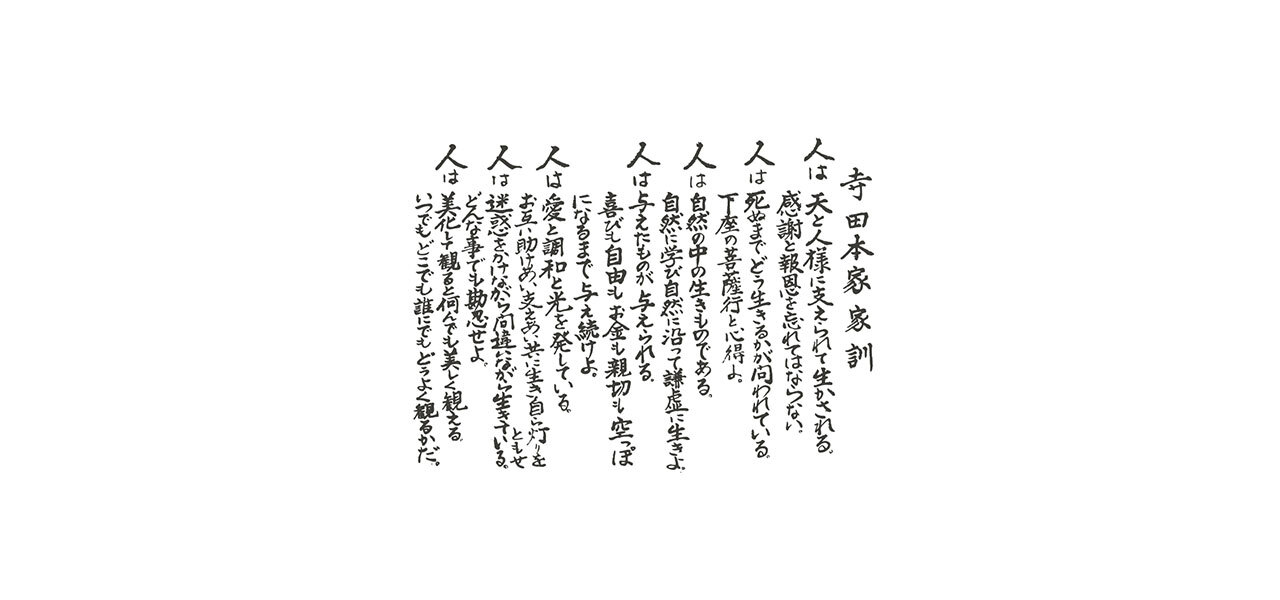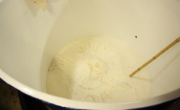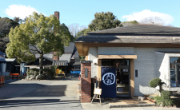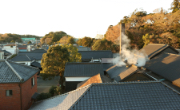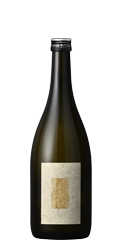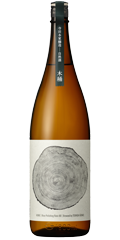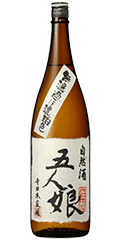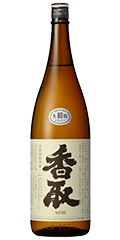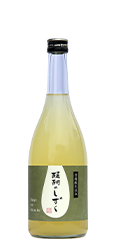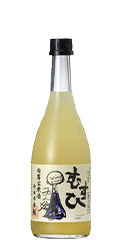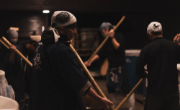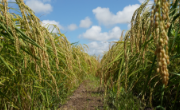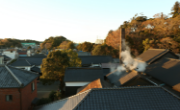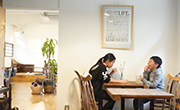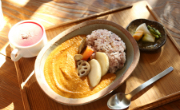350 years of fermentation and transformation
Greetings
For over 350 years, we have been brewing sake via an iterative process aligned with the cyclic changes of the four seasons in hopes of offering the best of all medicinal beverages.
It was during the Enpo years (1673–1681) of the Edo period when the ancestors of Terada Honke moved the brewery from Omi in Shiga Prefecture to Kouzaki in Chiba Prefecture, where they succeeded in laying the foundation to establish sake brewing as our main business. Since then, we have been able to survive by overcoming various challenges, especially during the difficult years of the Meiji Restoration and World War II, all the way through the most-recent Heisei era to the current Reiwa period. We literally cannot thank all of our customers and supporters enough for their patronage and warm encouragement, as it enabled us to keep operating our sake brewing business to this day.
We have created this booklet to share with you our gratitude and joy for those 350 years. We hope that we can convey this sense of joy to as many people as possible regardless of how far it may reach, and we would be delighted if you can join us in celebrating our 350 exciting years of sake brewing.
If gratitude and joy are the base threads that weave the fabric of our 350 years of history, then the embroidery would be the fermentation and transformation that have gotten us here. We started making natural sake in the 1980s, and since then, we have been transforming ourselves so as to grow further by asking one question over and over again: Can we make sake even more natural?
“Fermentation is a process of continuous change.” These are the words that were often uttered by Keisuke Terada, the 23rd generation head of Terada Honke and the patriarch that led us to natural sake brewing. He also used to say: “From the outside, we cannot see what microorganisms are actually doing. But underneath what we can see with our naked eyes, they are working actively with one another and continuing to transform. That is why they do not decay.” We believe that these 350 years have been a journey of constant pursuit to grow as an authentic brewer eager to continue searching for ways to make sake taste even better than before, without fear of change. We are very grateful for this opportunity to share with you through this booklet some of the highlights on how we have been self-transforming all these years.
the 24th-generation owner Masaru Terada
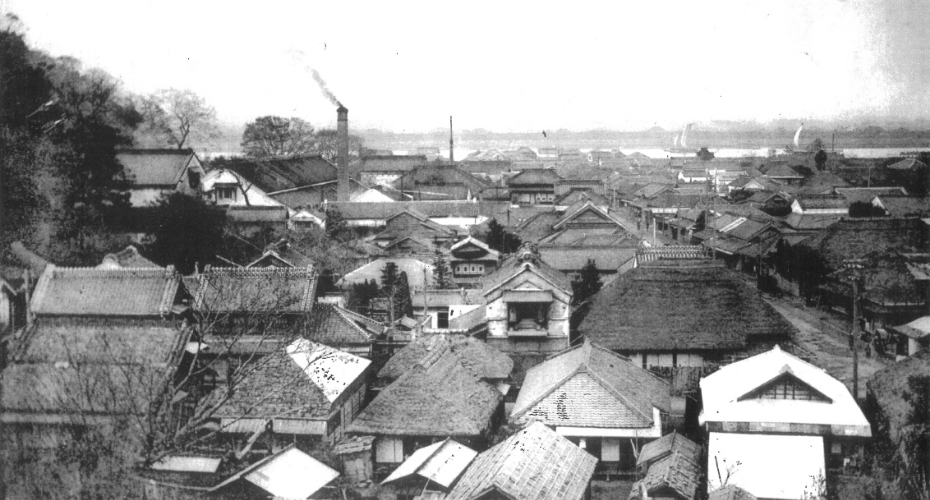
Region and history
Masayo Terada is the daughter of the 22nd generation head of this brewery and married a man that succeeded her father as the 23rd generation head. She still keeps herself busy supporting the family business as the eldest member alive. She has her own story to tell when asked about how Terada Honke has continued to evolve throughout her lifetime, which spans over the Showa, Heisei, and Reiwa periods, by adapting successfully to the many changes that her family business had undergone during many long years.
Terada Honke and its surroundings, from the Meiji to Showa periods
I heard that Keizaburo, the head of the Terada family during the Meiji period, was a highly respected member of the community for expanding a terakoya (small private school generally run by one teacher) into a full-fledged elementary school. The head of the next generation, Kikunosuke, was a talented businessman that not only operated a sake brewery but also ran a bank. Therefore, in the days of my grandmother and mother, the Terada family was wealthy and hired a lot of domestic help.
In those days, when the brewing season arrives, the brewery would get busy with the touji (chief brewer) from Echigo (Niigata) leading a team of around 10 brewers that will spend the entire brewing period at the brewery, using the second floor as their private space to rest and sleep over. Until the early years of the Showa period (1926–1989), the brewery had been following a traditional brewing procedure. But during World War II, the brewery ran short of supplies, including rice—the main raw material—which inevitably caused the brewers to pursue more-practical ways of “making sake at lower cost with fewer ingredients.”
The 23rd generation: The coming of a son-in-law during a period of “low-cost production”
My father (the 22nd generation), who became Terada’s son-in-law in 1952, was a high-school chemistry teacher before becoming a brewery owner. He already had adequate scientific knowledge on how to make sake inexpensively. But I think he was also aware of himself as not being a strong business owner. On the other hand, my husband, Keisuke (23rd generation), was born into a family that founded a listed company. As the founder’s son, he had inherited the DNA to run a successful business. That’s why my father welcomed the idea of making my husband the successor of Terada Honke right away when he heard that he would become his son-in-law.
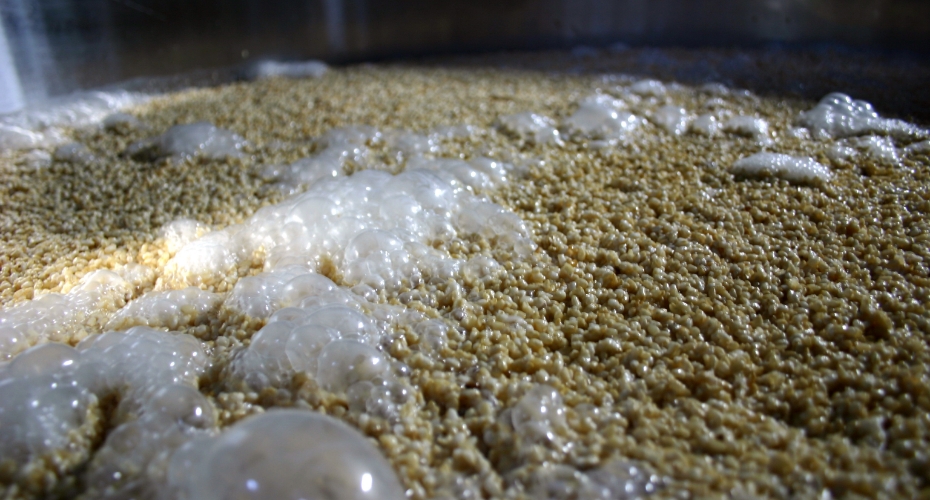
Why did it have to be “natural” sake?
From “low-cost sake” to “safe sake”
My husband took over the business at a time when the sake industry was slowing down and when sales were beginning to decline. He tried to do whatever he could to change things around. That included his attempts to diversify the business, such as by opening an izakaya (Japanese-style pub) or a soba (buckwheat noodle) restaurant. Then came a different challenge. He began suffering from a poor physical condition caused by a duodenal ulcer, which destroyed his health. It was then when he decided to steer the core business drastically to the direction of making sake that was safe to drink, and he led the brewers to create a brand-new product named “GONIN MUSUME,” a fully organic sake made without using any pesticides or additives.
Changes that began with “GONIN MUSUME”
The release of “GONIN MUSUME” served as a trigger to attract new supporters and fans.
Later on, our brewers began experimenting with new possibilities in the production of sake using genmai (unpolished brown rice), which was quite a challenge, as the common belief at the time was that the more the rice was polished, the better the sake would taste. It was especially difficult to achieve a satisfactory result in the making of genmai koji (brown rice malt), for which it took years to finally come up with a koji of the high quality necessary, with a great flavor. And derived from this koji was our first hatsuga-genmaishu (germinated brown rice sake), which we named “MUSUBI.” It has an unusual taste, but it has been received well by particular customers that are amused by the peculiarity of being a special type of sake made from brown rice.
My husband was not a drinker. But there was one type of shubo (yeast starter) developed in our motoba (yeast house) that he was able to enjoy, in participating in the tasting process. This became a product now sold as “UFUFU NO MOTO.”
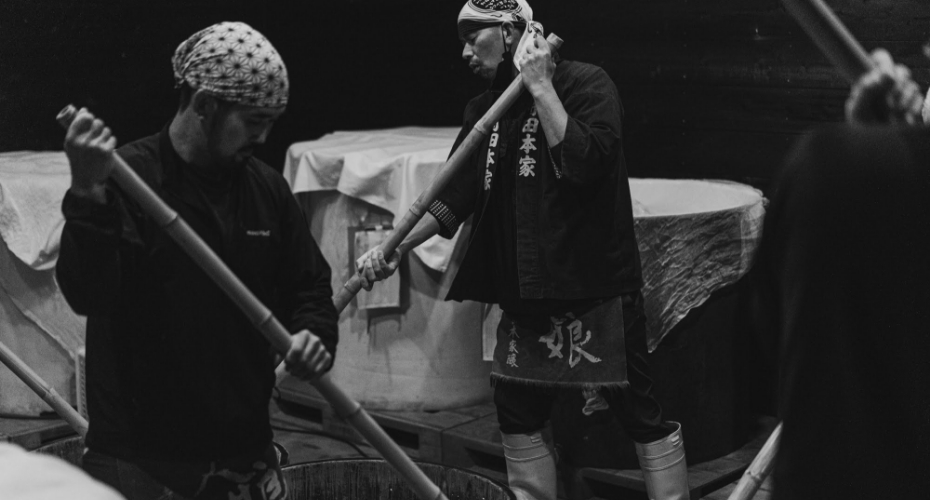
Terada Honke: Never ceasing transformation
Change is always accompanied by anxiety. But whenever I hear my husband say things like “Running a long-established business is a constant process of reform” or his favorite phrase, “We’ll be fine now!”, I feel that Terada has been able to move forward in the direction that we wanted to go. I am truly grateful for that.
My husband made “safe sake” by avoiding the use of additives, but he was not sure if it tasted good or not. The products that he made were basically plain and nothing fancy. It is Masaru Terada’s turn now, as the 24th-generation head, to add the enjoyment of taste to Terada-brand products.
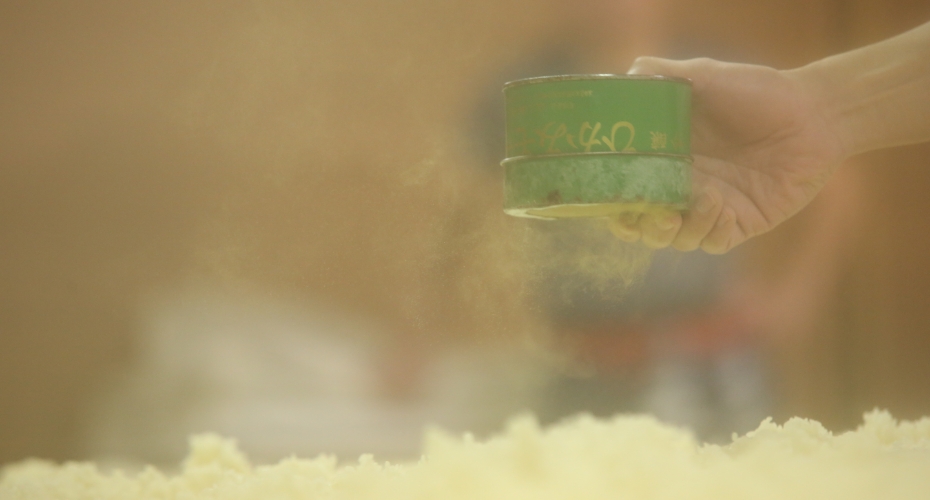
What makes sake brewing at Terada Honke so much fun?
Terada Honke is a place where time passes by joyfully. Such a happy feeling resonates with the microorganisms there, which in turn will then contribute to the making of energetic sake that can invigorate all those that enjoy drinking it.
- There is no answer that is absolutely correct.
- You can put as much of your thoughts as you like into production.
- And the products into which you have put all those thoughts can brighten up lives of those enjoying it all, bringing a smile to their faces.
- It means collaborating with invisible germs.
- You will be able to “feel” the microorganisms even if they are invisible.
- Just like how fermentation takes time, you will soon come to believe in the microorganisms.
- There is already a firm foundation laid out by the predecessors that will enable you to expand further right away from where they left off.
- You will be able to sing aloud a number of songs from the bottom of your heart.
- You will get the chance to vividly sense the change of seasons while working.
- There is always something exciting waiting for you that you can only experience once a year.
- You will be given an opportunity to make everything with your hands, including your tools.
- You will be exposed to a wide variety of craftsmanship.
- You will be able to experience the true freshness of the air that you get to breathe on a fine winter morning.
- You will engage in a type of work that will require you to make full use of all your five senses.
- Some things work while some others don’t, so that occurs evenly, striking a good balance.
- You will encounter wonderful artisans.
- You will get to know many nice restaurants.
- You will have the chance to welcome and interact with guests from all over the world.
- It will be a great full-cycle experience that starts with growing rice.
- You will be able to feel a sense of accomplishment every time you finish weeding the rice field each year.
- When you step inside the rice paddies, you will be greeted and surrounded by a lot of natural creatures of diverse forms.

Into the future
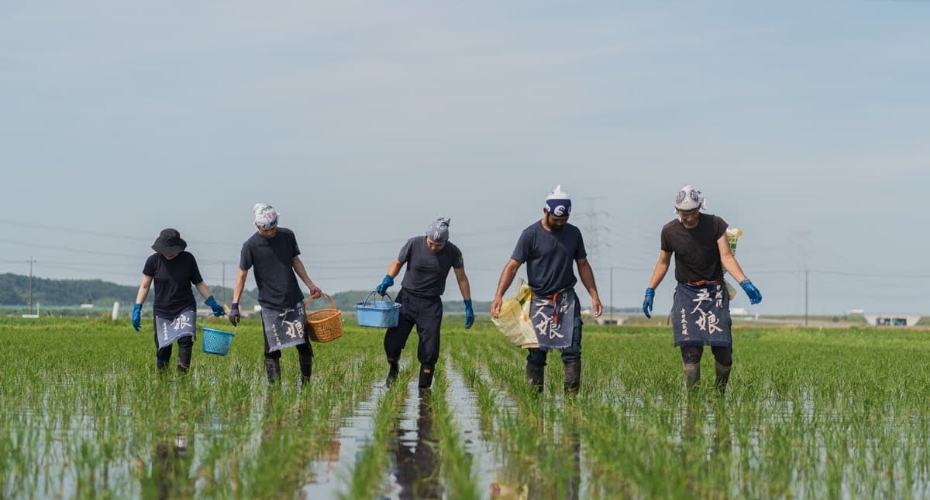
Future vision
What can we see in the future envisioned by Terada Honke?
At the sake brewing site, we see brewers working briskly to get each task done, and we hear echoes of their voices singing traditional sake brewing songs. In the wooden warehouses that have been carefully used for more than 100 years, the buckets and tools made by the craftsmen are neatly polished and lined up, waiting for their turn to be used. The microorganisms inhabiting there for many years, generation after generation, also continue to take part in the sake brewing process while sharing a sense of joy and gratitude with the brewers.
Thanks to technological advancements, the brewery enjoys significant progress in energy self-sufficiency. Water can be boiled via wood-derived fuel, just like the old days. Because natural sake is basically available everywhere here, there is literally no longer any need to emphasize the notion of being natural. We may have already entered an era where “ordinary sake” simply equals “natural sake.”
The brewery stands within the premises of Kouzaki Shrine, where thick and tall trees stretch their branches out and where leaves quietly supervise the various events that take place in this sacred forest. The microorganisms living in the soil interact with the roots of these trees to keep the land lush and fertile as the trees continue to breathe and make way for underground water to constantly flow into the wells dug within the brewery for so many years—to prevent the wells from depleting and drying up.
When you turn your eyes to the street running in front of Terada Honke, you will see an array of small shops, where local residents and travelers from afar intimately interact and deepen exchange. As you walk through the town, you can see farmers with smiles on their face while they engage in agriculture with a sense of pride. The high-quality agricultural products that they have grown in their fields serve as valuable assets that nurture jobs and opportunities for making a living in this locality. If we can continue to brew sake in such a pleasant community blessed with rich nature and filled with smiles, that is the future that we would like to envision.
Now, for the future
What we can do now to realize this envisioned future is to learn from nature.
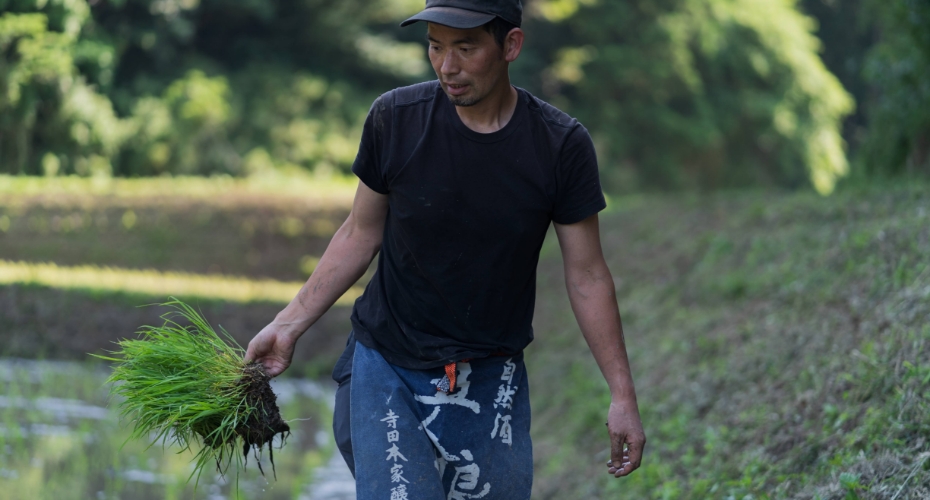
Rice field restoration project
Terada Honke started engaging in a rice field restoration project from 2021. Through this project, we are working on borrowing yatsuda (a local term for rice fields positioned in valleys) from owners that have left them unused for a decade or longer and restoring them into rice fields again.
When we first went to see some abandoned rice fields, the grass and shinotake bamboos that have overgrown while they were left untouched covered both the fields that were once rice paddies and the roads leading to them, including some places where bushes have become overgrown. Yet, we were amazed by the richness of the natural environment around these fields when we found freshwater crabs in the stream created by the dripping water flowing from the mountains. We thought that if we could use this natural stream water to grow rice for our brewing, we would be able to enter further into the world of natural sake-making. So, our brewers got together to cut grass and draw water into these fields so as to cultivate them little by little into rice paddies again. The yield in the first year (2022) has still been very small, but we are hoping to use the fresh rice grown (at the time of writing, it is still being harvested) in the restored paddies to brew our memorial natural sake commemorating Terada Honke’s 350th anniversary.
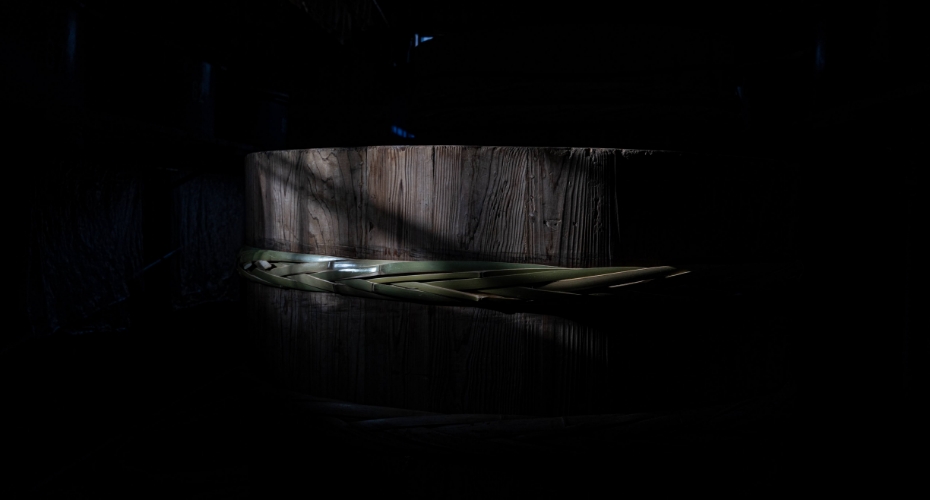
Wooden vats and bamboo colanders
Many tools are used in sake brewing. In the past, natural materials such as wood and bamboo that were available locally were abundantly used, but gradually these have been replaced with plastics. The number of craftspeople that can create these handmade tools is decreasing. Because the demand for wood, bamboo, and other natural materials is on the decline, people are not going into the forests as often as before. This is one of the factors leading to the thickening of mountain wilderness.
We have been looking for opportunities to collaborate with craftspeople. In 2013, we asked a craftsperson in Osaka to make a wooden koshiki (rice steamer) for our brewery. When we started using it, we found that the use of wood improves the steaming process, and we were once again deeply impressed by the excellent functionality of natural materials used for our traditional tools. We also had a young bamboo craftsperson in Tochigi make a colander for carrying rice, on our request. And, with the cooperation of the craftspeople in Shodoshima, a project to make a new wooden vat using the local cedar grown in Chiba called “sanbusugi” is currently underway as well. There is also a plan to make wooden vats by ourselves from scratch, starting from the initial step to cut out necessary natural resources from the forests conserved by our partners based in Sanmu. We hope to further expand our possibilities in natural sake brewing with these freshly made wooden vats that we intend to start using from our 350th year of operation.
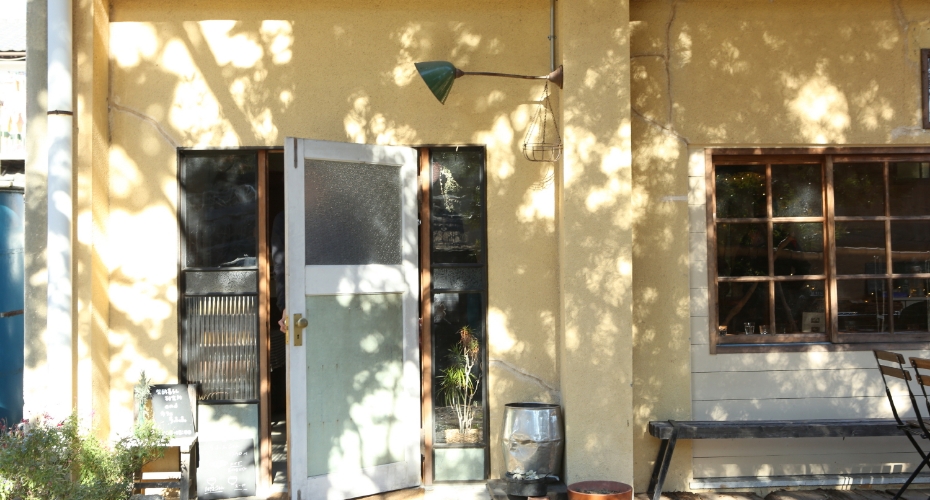
Our café
Terada Honke opened a café in 2016. We renovated an old apartment next to the brewery, hoping that it could serve as a trigger for more shops to open along the streets. We started serving food made from local agricultural products combined with the by-products of sake brewing, such as sake lees and koji. We are also gradually commercializing a series of fermented seasonings used in the café in the hope of providing more and more people with the excitement of enjoying the magical experience of fermentation at home and in our brewery.
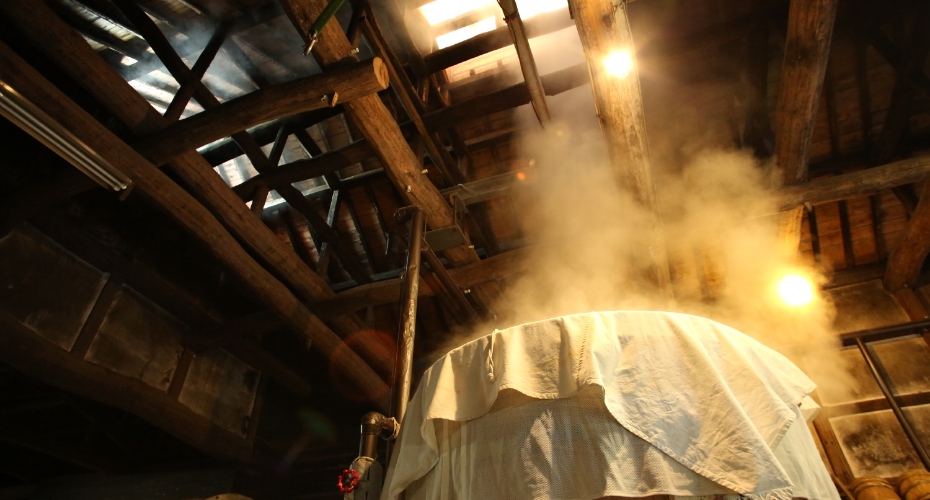
Energy
Natural sake is born under the constraints of nature. The days of using energy limitlessly are gone, as we have come to realize that sources of energy are finite. Thanks to the advancement of technology, we managed to fully switch the electricity used in our brewery to renewable energy. We are aiming to convert other energy sources to renewables at the earliest date possible.
Learning from the past
It has been 30 years since we started advocating the importance of “learning from nature through our sake brewing.” As part of the program to celebrate our 350th anniversary, we have shown some highlights of our past, present, and future. The close relationships that we have been able to develop, maintain, and hand down over 350 years have been truly fermentative, such as those with: the microorganisms that live in our brewery; the generations of tools and equipment at Terada Honke that have been carefully maintained and handed down to us from our predecessors; the brewers that have dexterously use these tools to get the best results out of each brewing cycle; and the farmers that have been growing and supplying us with all the fine rice. Each and every one of us is different. We shift along with generational change. But this large ecosystem that we have built with all of them remains unchanged. It is only the patronage of everyone that continues to support us that will allow us to keep this mechanism working. We send our deepest gratitude to all those that continue to support us because we very well know that we cannot keep this intricate relationship working all these years without such patronage.
The next milestone, our 400th anniversary, will come in 2073.
By continuing our quest to discover what natural sake is all about, we assure you that Terada Honke will continue to have a promising future in the next 50 years by developing natural sake that will bring positive experiences to customers more than ever before, and we pledge that we will continue to pursue the possibilities of fermentation together with every person that loves nature, living side by side with microorganisms.
